#Atlantic history
Text

Piri Reis Map. An Ottoman world map depicting part of South America and the Caribbean. Compiled in 1513. It was “rediscovered” in Topkapi Palace in 1929.
#history#culture#early modern history#art#ottoman#topkapi#middle eastern history#south american history#atlantic history#illustration
0 notes
Text
I was reading a post on a popular history blog (by "popular" I suppose I mean it updates regularly and seems to have commenters, although who the hell knows that the words "popular," "history" and "blog" mean in that order in the present day).
I was reading a post on this blog about the decline of history as a profession. As someone who flung himself bodily from the path of history grad school and sometimes wishes he hadn't (despite knowing it was the right decision), the topic is of some interest to me. I then made the mistake of reading the comments. You see, the OP had made a passing reference to the controversy over a small essay by the president of the American Historical Association, an Africanist at UW-Madison named James Sweet. As one might expect from someone who is the president of a professional organization, he's older; it is relevant to the linked piece and the entire contretemps that he's white. The blogger linked the same piece I did above, but rather than talking about the now months-old controversy, talked about the president of the AHA bemoaning, in the _Atlantic_, the allegedly impending death of the scholar to scholar monograph rather than the truly dire straits that the historical profession finds itself in.
The piece does, indeed, include a link both to the essay that started the whole affair, as well as links to a range of responses -- some clearly dashed off, some more considered, some broad, some focused. You're free to read them and agree or disagree in whole or in part. I encourage you to; I certainly did.
I feel like I have to give you this background, gentle-but-entirely-notional reader, to really give you the full context for why seeing someone in the comments describe what happened as "the mau-mauing of James Sweet" blew my hair back. Imagine reading a piece on an intramural but, frankly, relatively low-stakes fight (if you followed the link above, you may have already done this). Then put yourself in the shoes of someone who looks at that and thinks "yes, the best way to describe what happened is to conjure the colonial bogeyman of unhinged Africans attacking the white man" and then expects to be treated as a good faith interlocutor. Perhaps, more in sorrow than in anger, he thinks at his keyboard that the other side has already abandoned reasoned discourse. Maybe he's just an asshole.
0 notes
Text
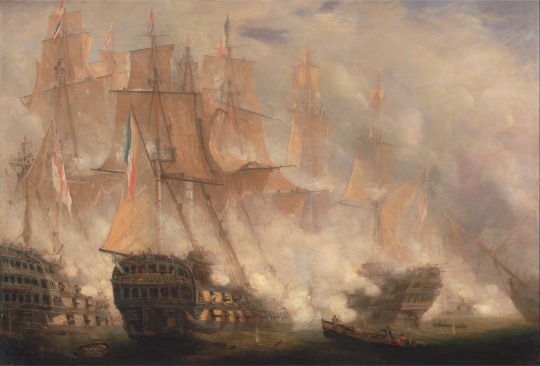
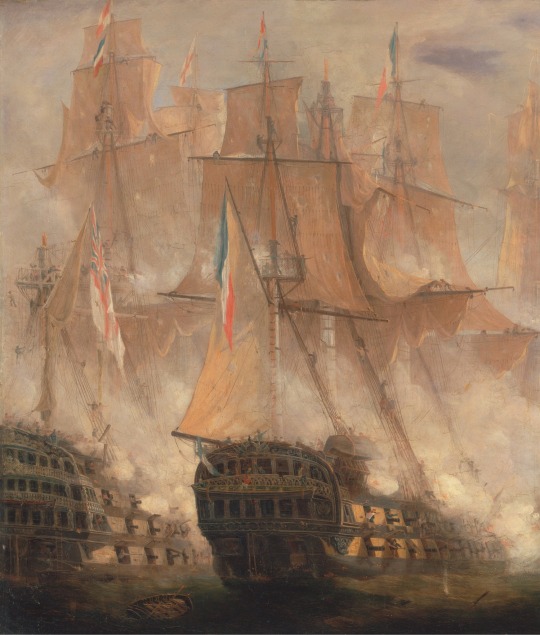
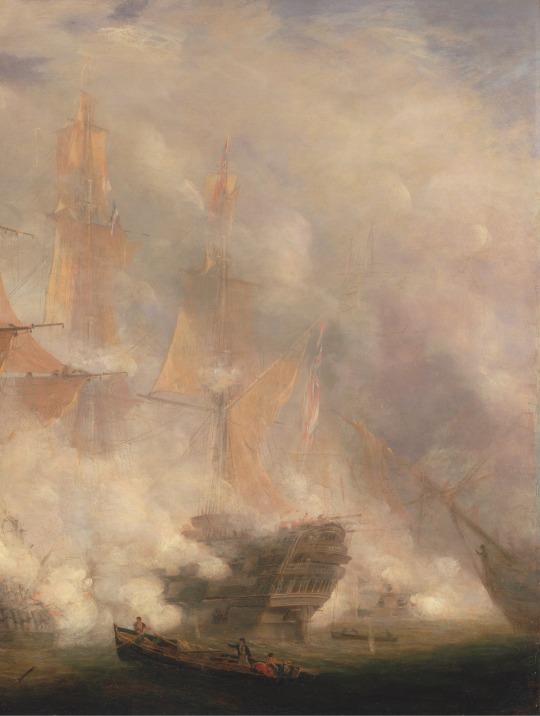
The Battle of Trafalgar by John Christian Schetky
#battle of trafalgar#age of sail#art#napoleonic wars#cape trafalgar#john christian schetky#atlantic#royal navy#great britain#england#britain#france#spain#horatio nelson#trafalgar#english#british#french#spanish#europe#european#history#napoleonic#warship#warships#ships#naval warfare#naval battle#sea
212 notes
·
View notes
Text
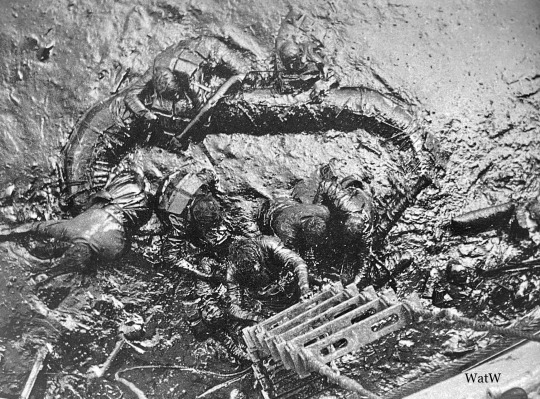
Survivors from a German U-boat all covered in oil are picked up by a British Royal Naval warship - Atlantic Ocean, date unknown
#world war two#1940s#worldwar2photos#history#ww2#ww2 history#wwii#world war 2#wwii era#ww2history#battle of the atlantic#atlantic ocean#u boat#wolf pack#survivors#royal navy
209 notes
·
View notes
Text
"A strong queen is just what this country needs!"
The Irish who know the queen in question as the famine queen:

#queen charlotte#queen charlotte a bridgerton story#bridgerton spoilers#a feminist moment for the ultimate anti feminist that was queen victoria#massive yikes just thinking of her involvement in the history of my country alone#over a million people starved & the British Parliament refused to accept financial aid from abroad#if they were offering more money than Victoria because they didn't want them to outdo the queen#and what she gave was pitiful considering her wealth#indigenous people as well as literal enslaved people across the Atlantic gave more financial aid than she did#yes bridgerton is fictional but the historical figures depicted had a real world impact#so much of which is still felt today#and just because Victoria was queen and not a king it doesn't make her crowning a win for feminism#Victoria historically was very very anti feminist#i don't know enough on george iii or Charlotte to comment on them but i know plenty about Victoria#haven't cringed so hard at a line since the famine episode of victoria the things i watch for leo suter#but as much as Victoria herself was portrayed inaccurately in that ep#at least it introduced the history of the famine to people who weren't taught about it at school#bridgerton
551 notes
·
View notes
Text

Dahomey (2024) dir. Mati Diop
Mati Diop (Atlantics) just won the Golden Bear at Berlin and shouted “I stand with Palestine!” as she accepted her award. Her film deals with the returning of plundered royal treasures from the African Kingdom of Dahomey from Paris to the present day Republic of Benin.
#undeniable#neotai's song#mati diop#master teacher#free gaza#free palestine#Palestine#dahomey#cinema#German arts scene revealed itself to be deeply anti Palestinian and even more racist and Islamophobic than previously thought#cutting funding for anyone who dares to speak out about palestine so this was a great venue for Palestine to be mentioned within...#Germany standing on the wrong side of history…again and again...but german activists outchea raising hell...#you saw how they turned hilary clinton's cinema for peace (the AUDACITYYYYY) event upside down#MUCH RESPECT TO THOSE ACTIVISTS#and to mati showing out#look forward to seeing the movie as atlantics was dope and needs a rewatch tbh#the 'after atlantics' marketing is dope cos black artists are so often cut off from their own continuity and context by the establishment#movies
104 notes
·
View notes
Text



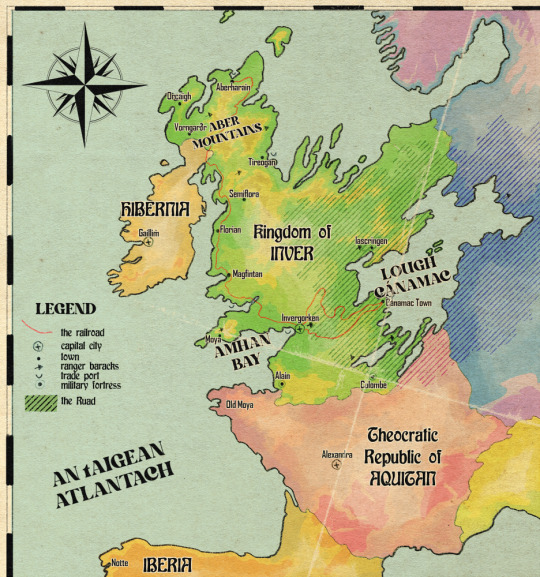
Inver - relief map relative to the continent with otherworld territory marked, broad habitat map, detailed local landmarks map, and political map of the northeast atlantic peninsula as of 1862
i was just having map fun for two days lol. i make habitat maps a lot already but the difference with this one is that i can't just download a handy shapefile and do some GIS magic. this was hand drawn (but obviously. somewhat traced over the actual irl map)
for the outline of the north sea coast i used bathymetry data to figure out where the true coastline would occur. the north sea recedes but the atlantic doesn't (to the same extent). because this landmass was formed through some ancient Event, i felt pretty okay about changing the bedrock because like, whatever, we can't be fully realist all the time. so the northern half of inver is mainly limestone, the southern half is silicaceous - so we got the bog/marl divide there, though lough cánamac (in volume slightly larger than any of the north american great lakes) appears to be the remnant of the north sea, it is freshwater with a relatively low pH. the water of the lough is black to dark brown due to the run-off from the southern bogs and swamps.
in the north, the mountain ranges are calcareous. calcareous grassland, scrubland, heaths and fens dominate with a largely alkaline profile. limestone marl lakes which regularly flood due to groundwater input make the region pretty unsuitable for crops other than rice.
the ruad is the name for a stretch of otherworld territory which contains the lough, though generally used to refer to the forested area. it is completely uninhabitable throughout the majority of its range due to the non-euclidian structure of the land making it impossible to navigate consistently, and the strange and frequently hostile creatures living there. the ruad is faery territory and belongs to an entity known as the Red King, who uses the symbol of a stag. so although inver may look like a large country compared to its neighbours, it has a relatively small population concentrated on the west coast.
however, sailing across the lough is the quickest way to trade with countries in the east, far quicker than trekking through the forest and over land. the trade route through the ruad from invergorken to the cánamac town is one of the most valuable in the continent. it consists of an old road with regularly-spaced ranger safehouses and patrols, and a newer pair of railway lines which can cut through the supernatural aura of the ruad due to their iron rails. the first and older line is no longer in regular use. it was constructed before the development of wrought iron and before the build crews learned how to blast through rock, so it takes a very slow and winding route and required a lot of maintenance. safehouses were constructed to board the workers while the tracks were laid. but without this original track, the construction of the second, far more advanced wrought iron track would have been impossible. workers for the second track were able to commute and sleep on the first track's train, keeping them from harm. the second track can fit two trains side by side and is in constant use ferrying cargo and passengers between the two towns
the country of inver, once The Event wiped out all of its original inhabitants a couple thousand years ago, was settled by hibernians and vikings from the north moving south, and aquitanians from the south moving north (thus the place names). the ruad mostly blocked incursions from the east. there was a long history of dispute over who truly owned the land, and that remained sort of up in the air for most of its history until the 1400s when armorican warlords (like Olivier) decided to make it theirs for realsies and waged war against their old hibernian trade partners (like Finbarr) for control of the land. the hibernians lost because finbarr fucked it up at the last second, and this cemented a ruling class of werewolves in inver until the 1860s
inver consists of three large duchies which cover 70% of the population. Moya in the west is the heart of lycanthrope rule, everybody worships a faery known as the immortal hound and the ruad is far enough away that it is not a fact of life as it is for everyone else. Inver duchy covers the capital city and the south-western farmland, the main sites of production in the country. And Cánamac duchy covers the trade port in the lough and surrounding territories, where forest clearing has led to new farmland and a thriving population. There was a fourth duchy in the north, Aber, but it was historically somewhat isolated and cut off from the south of the country and had developed its own customs and traditions, and its own form of the country's currency. In the 1840s, the duchy of Aber was dissolved and reconstituted into the king's lands, and southern customs were enforced in the north to prevent any more divergence. the palaces of the ruling families in each territory are shown in the local map alongside the family names.
Due to The Event causing massive damage in this region of Europe, forbidding the development of britain and france etc as colonial empires, the last great Empire of this continent was the roman empire, and even that didn't manage to overcome the Ruad. technology is rudimentary in Inver and the people living there are largely considered to be weird backwards superstitious barbarians. aquitan has been threatening annexation for decades, led mainly by the church of suzette, which forbids interaction with otherworld entities. the church holds in disregard the nobility of inver and their cultish ways, and as a result has been banned from attempting to convert inver citizens. but the church is still allowed to make minor inroads into inver for one very important reason: penicillin and antibiotics are the sole creation of the church, and the secret of how they are made is unknown outside suzette. so for the sake of good, advanced healthcare, the church is allowed to set up clinics and hospitals, on the condition that nobody is converted, and members of the church are strictly banned from engaging in any business but importing and selling antibiotics
#ignore me using the wrong orthography in several places#setting: inver#northeast atlantic peninsula bro what happened to u... oh no.. he died...#none of that is spoilers under the cut it's just like. basic history everyone knows
524 notes
·
View notes
Text
"Twenty men have served as the chairman of the Joint Chiefs since the position was created after World War II. Until Milley, none had been forced to confront the possibility that a President would try to foment or provoke a coup in order to illegally remain in office. A plain reading of the record shows that in the chaotic period before and after the 2020 election, Milley did as much, or more, than any other American to defend the constitutional order, to prevent the military from being deployed against the American people, and to forestall the eruption of wars with America's nuclear-armed adversaries. Along the way, Milley deflected Trump's exhortations to have the U.S. military ignore, and even on occasion commit, war crimes. Milley and other military officers deserve praise for protecting democracy, but their actions should also cause deep unease. In the American system, it is the voters, the courts, and Congress that are meant to serve as checks on a President's behavior, not the generals."
#History#The Atlantic#Jeffrey Goldberg#Mark Milley#General Milley#Chairman of the Joint Chiefs of Staff#U.S. Military#U.S. Constitution#President Trump#Donald Trump#Trump Administration#January 6th Insurrection#2020 Election#Politics#Law#Democracy
116 notes
·
View notes
Text
Residents of North Sentinel Island off India are one of the few suriviving tribes that resist contact with the outside world. When a missionary successfully contacted them in 2018, in violation of international law, they killed him brutally.
Turns out they (or their neighbors) were in contact with the outside world previously—a Victorian English adventurer—and it went badly for them, tragically and unsurprisingly.
66 notes
·
View notes
Text
"Far from being exceptional in American history, gun-control regulations are the default. If 'Bruen' was designed to nullify the constitutional basis for many gun laws, it ought to fail."
--Robert J. Spitzer, political science professor emeritus at SUNY Cortland

Robert J. Spitzer, professor emeritus at SUNY Cortland outlines the early--and plentiful--history of gun regulation laws in early American history. Consequently, Clarence Thomas's 2022 Bruen decision might not be the disaster for gun control that some people have thought. Below are some excerpts from the article.

In the summer of 1619, the leaders of the fledgling Jamestown colony came together as the first general assembly to enact “just Laws for the happy guiding and governing of the people there inhabiting.” Consisting of the governor, Sir George Yeardley; his four councillors; and 22 elected “burgesses,” or representatives, the group approved more than 30 measures. Among them was the nation’s first gun law:
"That no man do sell or give any Indians any piece, shot, or
powder, or any other arms offensive or defensive, upon
pain of being held a traitor to the colony and of being
hanged as soon as the fact is proved, without all redemption."
After that early example of gun control came many more laws placing restrictions on the ownership and use of firearms. If guns have always been part of American society, so have gun laws.
This fact might come as a surprise to some gun-rights advocates, who seem to believe that America’s past was one of unregulated gun ownership. That view received a big assist in 2022, when the Supreme Court declared in "New York State Rifle & Pistol Association Inc. v. Bruen" that the constitutionality of modern gun laws depends on whether they are “consistent with this Nation’s historical tradition of firearm regulation.” In other words, the constitutional standard for any modern gun law boils down to whether you can find a good precedent for it back in the 1700s or 1800s.
The advocates’ assumption is that such precedents are few and far between, but thanks to the work of researchers and the digitization of archival material, thousands of old gun laws, of every imaginable variety, are now available for reference. Far from being exceptional in American history, gun-control regulations are the default. If "Bruen" was designed to nullify the constitutional basis for many gun laws, it ought to fail.
[...]
Throughout this long period in the history of the republic, up until the beginning of the 20th century, gun laws placed conditions or restrictions on weapons access for a wide variety of citizens—in particular, indentured servants, vagrants, non-Protestants, those who refused to swear an oath of loyalty to the government, felons, foreigners, minors, and those under the influence of alcohol. Numerous laws regulated hunting practices, as well as firearms’ carry, use, storage, and transportation; regulated the manufacture, inspection, storage, and sale of firearms; imposed gun licensing; and restricted dangerous or unusual weapons.
Despite the Thomas opinion’s claim that “the historical record yields relatively few 18th- and 19th-century ‘sensitive places’ where weapons were altogether prohibited,” some local authorities outlawed the discharge of firearms in or near towns, buildings, or roads, as well as after dark, on Sundays, at public gatherings, and in cemeteries. In some jurisdictions, any use of a firearm that wasted gunpowder was also an offense.
[...]
In the post-revolutionary 1800s, as rising violent crime led more people to arm themselves, a total of 42 states (plus the District of Columbia) enacted laws against concealed carry. Three more did so in the early 1900s, so that the total included almost every state in the Union. As many states from the 1700s to 1900s also enacted some form of weapons-licensing law.
That’s not all. Over that same period, at least 22 states restricted any gun carrying, including of long guns. Moreover, across the entire period, three-quarters of the states had laws either against “brandishing”—waving a gun around in a menacing or threatening manner—or merely having a weapon on display in public.
[...]
In addition, even though for much of its history America was an agrarian country...its lawmakers and enforcers were inventive and determined about ensuring public safety. When they perceived a threat to that order from firearms, they passed laws to restrict or prevent them. And back then, by and large, no court struck those laws down.
That is what is truly consistent with this nation’s historical tradition of firearm regulation. So if we accept the originalist premise of "Bruen," the actual result should be to render a broad array of gun regulations constitutional.
[color emphasis added]
#american history#gun control#america's original gun control#robert j. spitzer#bruen decision#the atlantic
91 notes
·
View notes
Text

The strong presence of the sea is grossly under-examined in American literature, doubly so in African American literature. As Elizabeth Schultz observes, "Historically and culturally, the African American experience has been an inland one. Black Americans," she continues, "have not generally turned seaward in their literature." Although she comes to a "however" that adds the observation "the sea is not absent from African American literature," the rhetorical pose imagined in the claim that "the sea is not absent" is that it will take a good deal of searching to find it. And yet, as Jeffery Bolster observes in his ground-breaking 1997 study Black Jacks, "Sailors wrote the first six autobiographies of blacks published in English before 1800". Many of these autobiographies carry clear abolitionist intent and hint at the type of anti-slavery discussions carried on by sailors around the Atlantic world. When scholars of African American literature turn their attention to works written by sailors, like Olaudah Equiano's The Interesting Narrative of the Life of Olaudah Equiano, or Gustavas Vassa, the African. Written by Himself (1789), most suffer from the misplaced assumption Schultz points to, and thus fail to see the crucial link between sailors and black abolitionism. Indeed, what Crispus Attucks, Paul Cuffee, Robert Smalls, Frederick Douglass, and so many other black revolutionaries in America have in common is that they were all sailors or in some other way directly connected to the maritime trades.
— Matthew D. Brown, 2013. “Olaudah Equiano and the Sailor’s Telegraph: The Interesting Narrative and the Source of Black Abolitionism.” Callaloo: A Journal of African Diaspora Arts and Letters 36 (1): 191–201. doi:10.1353/cal.2013.0059 (Google Drive link)
‘Drunken Sailors’ by John Locker, 1829 (NMM)
#age of sail#black history#black sailors#sailors#naval history#maritime history#atlantic world#abolitionism#black jacks#olaudah equiano#john locker#maritime art#black history month
178 notes
·
View notes
Text

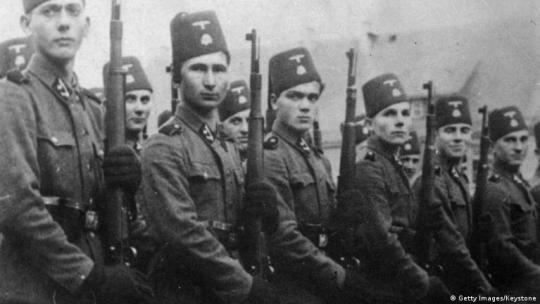

The Non-German defenders of the Atlantic Wall,
In 1942 Germany began construction of the Atlantic Wall in order to defend its territorial conquests from a possible Allied amphibious invasion. The wall consisted of various fortifications, mines, tank barriers, mortars, artillery pieces, machine gun nests, pillboxes, and bunkers, and was designed to fend off a beach landing. On June 6th, 1944 Allied forces landed on the beaches of Normandy and quickly overran these defenses. Thousands of German soldiers were captured, but surprisingly many of those captured were not German at all.
At the very beginning of the war Germany upheld its Nazi belief in pure Aryanism, believing themselves to be the superior super race. However as the war dragged on, that sentiment gave way as casualties grew, manpower shortages worsened, and it was becoming clearer that Germany was losing to the Allies. Both the Wehrmacht and the SS began to accept foreign volunteers with many of these foreign troops being sent to garrison the defenses of the Atlantic Wall. These soldiers came from all over Europe, the Middle East, and Asia.
The reasons for volunteering were varied, some political, many as a necessity for survival. By far the most numerous foreign volunteers were those from the Soviet Union. Some volunteered because they were disgruntled with Soviet rule, for example the Russian Liberation Army which joined the Wehrmacht to oppose communism in Russia. However most volunteered as an alternative to spending the rest of the war as a POW. Soviet POWs were treated terribly during the war. Often the Germans dealt with Soviet POWs by erecting open air prisons in which thousands would be confined. Thousands would be forced into the prison, where they would be exposed to elements, given little food, and basically be left to die of starvation, disease, or exposure.
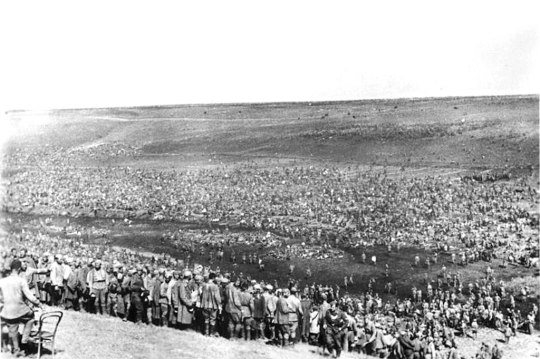
During the war, around 3.5 million Soviets prisoners would die in these camps or in concentration camps. For many Soviet POWs, service with the German Army was the only way to avoid such a horrible fate. Typically, these troops were often not very reliable in combat as they were not very motivated to sacrifice life and limb for their conquerors. In some cases they proved to by a grave liability, such as the case of a battalion of soldiers from Georgia which manned the Atlantic Wall defenses on the Dutch island of Texel, who in 1945 openly revolted against the Germans.
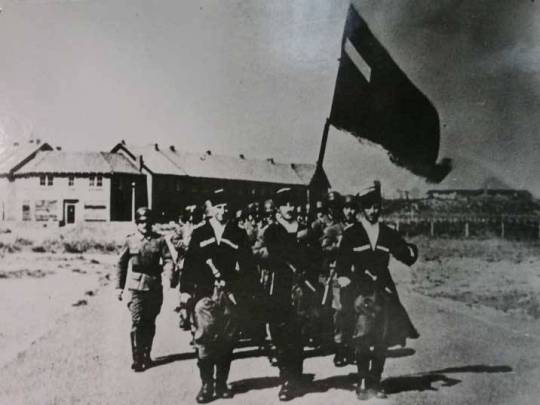
One notable extreme was the Indian Legion, also known as the Azad Regiment, which consisted of volunteers from India who believed that a German victory would secure India’s independence from the British Empire.
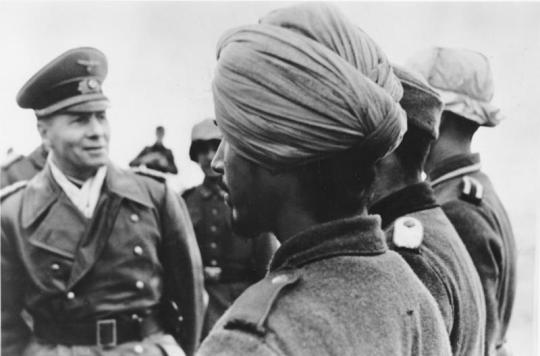
As well as many thousands of foreign volunteers, there were also many thousands of foreign conscripts who were forcibly made to serve in the German Army.
By far the most numerous conscripts were Polish. Before World War I many parts of Poland had been a part of Prussia, and later the German Empire. When Germany re-conquered these territories they considered many of the people living there to be ethnic Germans. As such, they were considered full citizens of the Reich and thus were subject to German draft laws. Many still believed themselves to be German and thus were willing to fight for the German cause, however many spoke Polish, had adopted Polish customs, and identified themselves as Polish. Regardless, refusing to obey the draft laws could result in serious consequences, not only for the individual but his family as well. Around 500,000 Polish were conscripted into the Wehrmacht, with many serving on the Atlantic Wall. Like the Soviets, the Polish also were not the best soldiers for Germany as they were often unwilling to fight for their taskmasters. Around 85,000 would defect to the Free Polish Forces during the Normandy invasion and subsequent advance to Paris. In addition to Polish Troops, a number of Czechs considered ethnic Germans would be conscripted as well. In the 1998 film Saving Private Ryan this is demonstrated in a scene in which two "German" soldiers are surrendering to a pair of American soldiers. The Americans mock them before gunning them down. What many viewers may not relize is that they were not Germans, but Czechs, and were shouting in Czech that they were Czechs who didn't kill anyone, and just wanted to surrender.
youtube
By far the most interesting extreme in this instance were a group of Koreans who were captured by American forces during the D-Day invasion. For three decades Japan had occupied Korea, and the men were forcibly conscripted into the Japanese Imperial Army. In 1939 Japan attempted to invade the Soviet Union through Mongolia, but were badly beaten at the Battle of Khalkhin Gol. The Koreans were captured and sent to the gulags, but with the German invasion of the Soviet Union, were then forced to join the Red Army and fight on the Eastern Front. They were then captured by the Germans, conscripted into the German Army, and forced to man the defenses of the Atlantic Wall at Normandy.


Overall, one in six defenders of the Atlantic Wall were not German. Nothing demonstrates the diversity of these defenders more than the photo below of a group Wehrmacht soldiers captured during D-Day
Front Row (from left to right): a Yugoslav; an Italian; a Turk; Polish
Back Row (from left to right): a German; a Czech; a Russian who was forced into the army when the Nazis occupied his town; and a Mongolian.
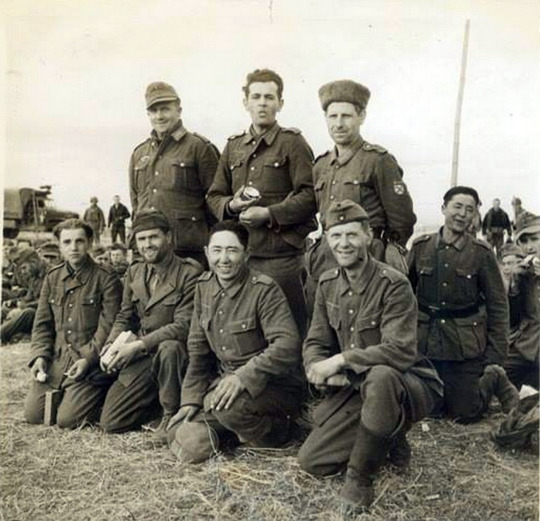
138 notes
·
View notes
Text

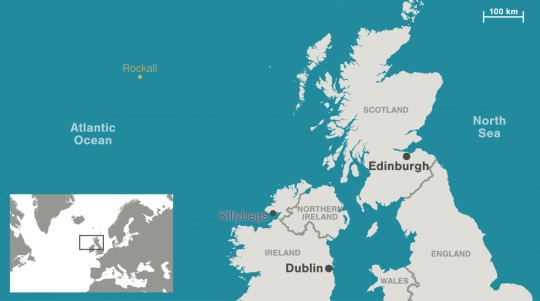
On 10th February 1972 the Island of Rockall, 250 miles west into the Atlantic formally became part of Scotland.
To start here's a wee poem Ifound by a comedy duo Flanders and Swann, who were an 50's 60 act.
We sped across the planet To find this lump of granite One rather startled gannet In fact, we found Rockall.
The uninhabited rock is 25m wide and 17m high and is actually the remnants of an extinct volcano.
The tiny islet has been the source of an ownership dispute involving the Scotland, Ireland, Denmark and Iceland. The plateau on which it sits has caused the decades worth of tension.
While we might think we own it I agree with the United Nations definition in cases like this.....“Rocks which cannot sustain human habitation or economic life of their own shall have no exclusive economic zone or continental shelf.”
So that’s the end of it right?
Well no, as the UN’s rules explicitly apply to “rocks which cannot sustain human habitation”, there have been attempts to prove that Rockall is in fact an island and does not fall into that category.
Former SAS soldier Tom McClean spent 40 days on Rockall from from 26 May to 4 July 1985 in an attempt to validate it as an island and make it a British territory. Since then Greenpeace activists spent 42 days protesting against exploration and five years ago in 2014 Scottish explorer Nick Hancock occupied the rock for 45 days.
For the moment though, the status of the Rockall remains that the UK claims is at part of its territory, more specifically, Scotland. While Ireland does not accept this claim, neither does it argue that Rockall is Irish.
While on the subject, met Tom McClean back in the 90's when he had his "boat" Moby berthed at the Water of Leith near the Docks. He invited us aboard for a tour of the strange craft. Tom had planned to take it across the Atlantic, it has yet to come to fruition, but I don't discount anything from this man, even aged 78! Tom was the first man to row across the Atlantic solo in 1969.
23 notes
·
View notes
Text
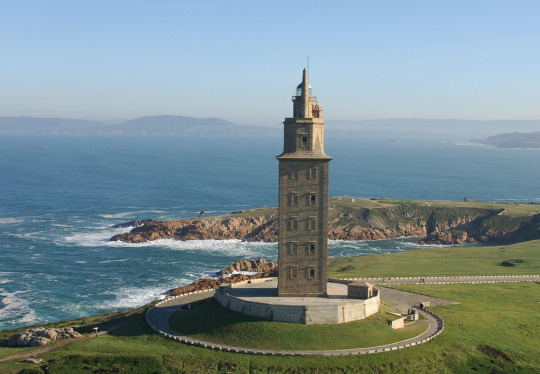
The Tower of Hercules, a Roman lighthouse in A Coruña, Galicia, Spain
#tower of hercules#roman#lighthouse#torre de hércules#a coruña#galicia#spain#atlantic#atlantic ocean#tower#towers#lighthouses#europe#european#antiquity#architecture#monument#monuments#history#ancient rome#farum brigantium
147 notes
·
View notes
Text

A German sentry scans the horizon watching for an invasion that must surely come as he stands guard on the Atlantic Wall - exact date unknown
#world war two#1940s#worldwar2photos#history#ww2#ww2 history#wwii#world war 2#ww2history#wwii era#normandy#France#atlantic wall#Atlantic#sentry
148 notes
·
View notes
Video
The Good Old Days by Joe McMillan
Via Flickr:
Ivy City engine facility (Washington , DC), May 31, 1965––photo by Joe McMillan.
#c&o#chesapeake & ohio#sou#southern#acl#atlantic coast line#1965#trains#passenger train#history#washington dc
27 notes
·
View notes